CAPITOL REEF (Day 22 - part 2)
The Fremont River trail starts directly from the campground. It isn't very long (only about 1.3 miles) but does involve an elevation gain from 5,350 to 6,120 feet.

The first half mile is an easy stroll along river, then comes a moderately strenuous climb to an overlook 800 feet above the valley floor.
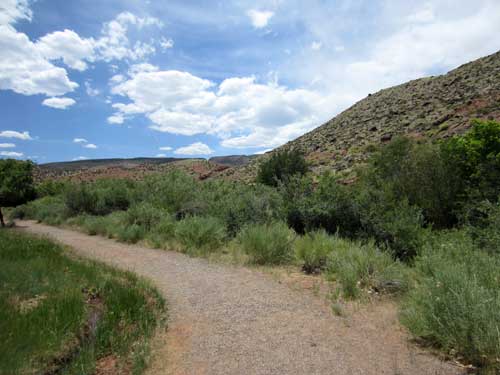
Setting out. To the right is Johnson Mesa.

Nels Johnson planted the first orchards back in the 1880's using abundant water from the river. Fruit was often traded with the neighboring towns for grain and supplies.

These are the same network of irrigation ditches used by the original settlers. The same idea was also used 700 years earlier by the Fremont Indians.

The river gets its name from John Charles Fremont who travelled by this area in the 1850's. It has a tendency to flash flood during midsummer storms.

While there are beavers living in the river, the current is too swift for them to build dams. Instead they tend to hollow out dens in the river banks. As a result, while many of the cottonwoods show gnawing damage (as food), they are seldom cut down for building.


While quite lovely, this non-native shrub is highly invasive. Tamarisk (or salt cedar) was introduced to the western US in the 1800's as an ornamental plant and for erosion control. Unfortunately is adapted far too quickly and spread along riverbanks throughout the region. By the mid-1900's, it was well-established, choking out native vegetation such as cottonwood trees and willows, and significantly reducing an area's biodiversity.
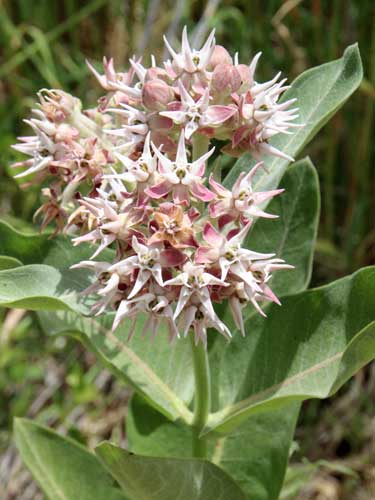
Milkweed, on the other hand, is a native plant. Native peoples used its fibers to weave baskets.
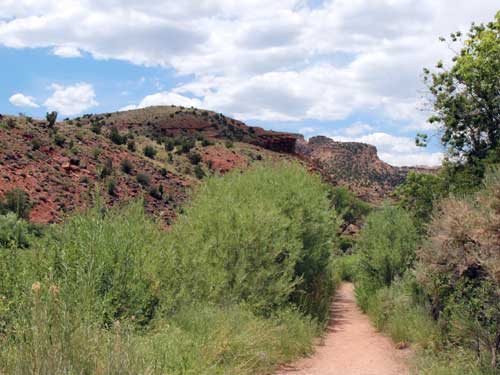

Sagebrush thrives in the transitional zone between the river and the desert.

Beginning the ascent

The Fremont River flows below... a slender oasis of life in the desert.
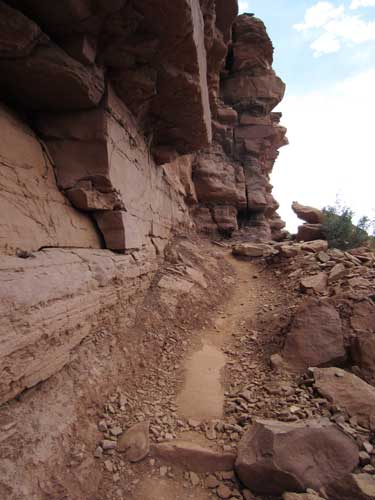
These massive brown cliffs are the Moenkopi Formation, aka the coastal mud flats. The rock is fine-grained and smooth.




Distinctive rock layers
Navajo Sandstone: the white domes at the very top; former sand dunes
Kayenta Formation: a thin layer of shrub-covered rock
Wingate Sandstone: the sheer red cliffs; wind-blown sand dune deposits
Chinle Formation: bands of maroon and light grey-green; made of volcanic ash and petrified wood; river flood plains and lake bottoms
Moenkopi Formation: the bottom chocolate-brown layer

Another look at our layer chart

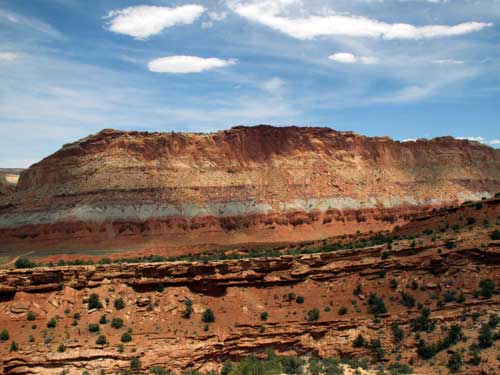
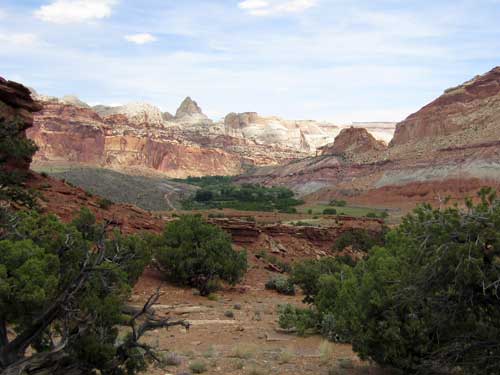

One of the 'capitol' domes

The ever-changing clouds played with the vibrant colors of the rocks below. Not to mention they provided momentary breaks from the heat!

A cicada. These were very easy to hear, but quite difficult to spot!

Nearing the end of the trail

The top of the trail

Amazing views!

A sense of scale

A side canyon

The flowers of the Antelope Bitterbrush...

... and the interesting immature fruits

This is end of the blooming season for Scorpion Weed.

Rose Heath is native to the southwest.

Blatant disrespect

A Flesh Fly decides to take a short ride with my on my camera lens.
Suddenly I noticed the time! I was going to have to rush back if I wanted to catch a 3 pm ranger talk. And so I started hurrying down the hill as fast as I could. Even at that pace, I was still going to barely make it in time. Then I stopped as I realized I was no longer enjoying myself. I decided to reset my thinking. While the ranger talk would have been nice, I was thoroughly enjoying my time out here on this trail. So I slowed back down and took my time examining the different rocks.

Heading back

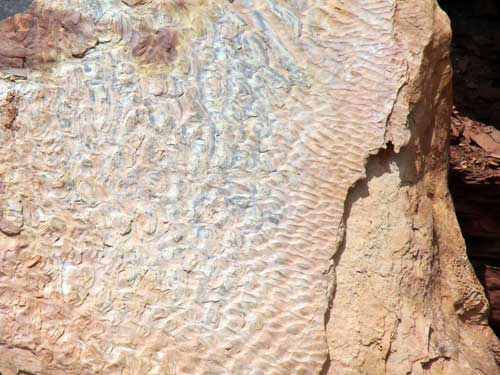
It was easy to see the ripple patterns on some Moenkopi Formation rocks, caused by the gentle wave action of long-gone seas.


More textures...

... and shapes
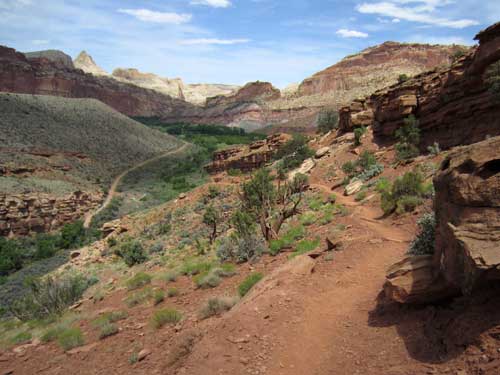
The descent. Johnson Mesa is on the left....

... It is covered with large, black lava boulders.
About 25,000 years ago, this area had a cold climate and abundant precipitation. A glacier formed on Boulder Mountain and flowed down into the valleys. It carried basalt boulders down with it. The rocks were washed along by the Fremont River which dropped them here. Since then, the river has cut downward another 200 feet.

The Fremont River below
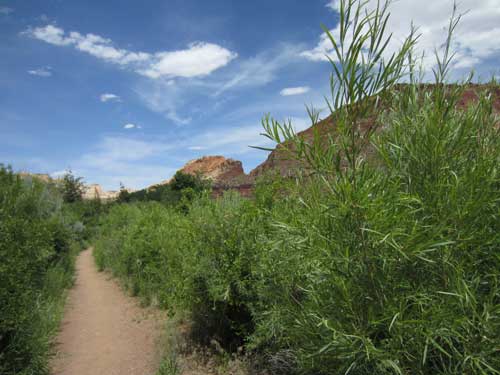
Back in the lush vegetation again

A young (nymph) Boxelder Bug

Orchard trees

Hints of the past
return • continue

